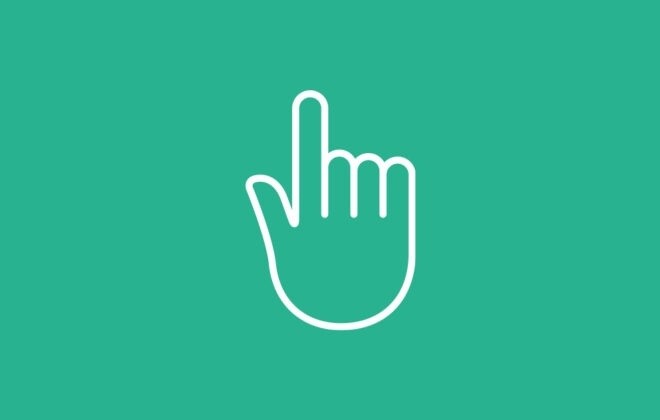
Why More Expensive PPC Ads are Almost Always Worth It
MORE EXPENSIVE LEADS are WORTH IT. Yeah, we said it. If you were told as a business that you could double or maybe even triple your lead-to-close ratio, would you be interested? If yes, then read on to learn why a sole focus on lowering your cost per lead is HURTING your business.
Cheap leads suck for a reason
There’s a reason why cheap keywords are…cheap. They don’t convert to sales. To make the biggest return on your ad dollars, the market (and Google) has figured it out: quality keywords are priced high because they work.
Cheap keywords bring in cold leads, tire kickers and information seekers — and they waste your sales team’s time. What you want are leads that are ready to book a sales call and make a purchase. They aren’t cheap but they’re worth it.
And let’s be real: there is no magical set of keywords everyone else glossed over that your PPC team will find.
Don’t look at cost per lead, look at value and return.
Let’s get completely off the idea of cheap or cheaper leads. Expensive keywords bring in higher quality leads. They’re closer to being ready to book a sales call because more expensive keywords demonstrate a more specific level of intent from the user.
Even if the targeted keyword is twice as expensive as the generic one, the financial return is high enough to justify the extra spend.
Take an example of a private tour company in the Bahamas. The click for “private excursion Bahamas” costs $5, while the generic keyword phrase of “excursions in Bahamas” is much cheaper. “Things to do in the Bahamas” is even cheaper. The problem is that the cheaper keyword has less user intent. The searcher is just as likely to choose a group tour for snorkeling or hiking as they are to pick a private tour excursion.
Focusing on expensive keywords helps you to find the most valuable leads for your company. Regardless of industry, we have much more success with bottom-of-the-funnel and exact match keywords. The conversion rates make them worth whatever it takes to get them. We help clients identify and execute those opportunities.
4 strategies for purchasing expensive (good) PPC ads
Once you’ve shifted your focus from cheap leads to maximum return, it’s time to revamp your keyword strategy. Here are four ways to capitalize on expensive PPC ads.
#1: Slice the data beyond an average CPL Google shows you
We’ve given up the idea of cheap leads, now let’s give up surface-level metrics like click-through rate or impressions. Here’s what drives revenue.
When you look at the ad platforms, you’re seeing an average that can be sliced in multiple ways: device, location, placement, geography and more. There’s gold in peeling back the onion.
One of our favorite examples is B2B companies (and some B2C companies) and desktop leads. While the world has turned to mobile, business is still conducted on desktop. We find more serious prospects and valuable buyers on desktop clicks and leads.
It’s worth taking a look, even if they do appear more expensive. Compare the extra expense and ROI to find your true lead cost and maximize your ads strategy results.
Here’s an example of what you might see on your ad spend report:
You spent $1,000 and you got 10 leads; therefore, you think the cost per lead was $100. But in reality, the cost per lead for desktop leads was $150 and mobile was $50 so you’re seeing a blended rate of the two.
B2B Client Example: One client paid $55 per mobile leads, which translated into a $75 conversion — that was just a $20 return on each lead. The more “expensive” desktop lead costs $87. But the conversion was worth $210 — a $123 return.
B2C Client Example: Even with high course registration rates from mobile, those participants were less likely to purchase. Desktop leads took out their credit card and paid post registration at a rate of 90% within the same day, vs. 55% same-day payment on mobile devices. Yes, they are more expensive, but they’re worth it.
You can see why it’s so important to dig past the surface level of your ad reports and look at each facet affecting your revenue. You’ll find the more expensive PPC ads have higher conversion rates and higher revenue.
#2: Use test campaigns before increasing your budget
If you’re still working on perfecting your business’s sales strategy, it may not be the right time to increase your budget yet. Expensive ads aren’t well-suited for a wobbly sales process. But that doesn’t mean you can’t dip your toes in the water. We can do smaller test campaigns to test your sales strategy and refine based on results.
Once you know your sales team can close the deal, you’re ready to scale with a larger number of quality leads. It’s not just the expensive ad keywords that bring in the results. It’s a smart ad strategy paired with a quality sales process.
Tell Us Your Goals
Send us your contact info and we'll follow up with a quick call to find out more about your goals and talk about how Clicks and Clients can help.
#3: Scale your budget but know when to stop
Pricing your CPL budget varies based on popularity, search level and competition. Most of our clients pay more for quality desktop ads because they’re more effective than mobile ads.
As you bring in more revenue, you may be willing to pay more per lead. We recommend spending more if you can get more out of your ad campaign. But check the results as you scale.
When going from $100 to $300 per lead, measure how much extra volume you get. Look at your data regularly to make adjustments. Using a professional digital marketing agency like CNC to monitor your accounts is the best way to ensure these details aren’t overlooked.
Here’s an example of how this worked for one of our clients. We incrementally increased ad spend from $200 to $500 per lead. When we jumped from $200 to $300, there was a 25% increase in leads. From $400 to $500, there was only a 15% increase.
There ARE diminishing returns as you push harder. For this client, there was no point in spending more than $500 per lead.
#4: How much more can you get? Exact match impression share
Paid search is taking over a larger portion of the page these days. Rather than focusing on placement, we prefer to improve exact match impression share.
The goal is to get a 90% exact match for your most valuable terms. That means you need a highly relevant ad that stands out, plus a sales process that converts traffic.
One of our biggest clients had an amazing sales system in place that allowed us to “buy” so much share. Competitors with worse systems would often be puzzled by how much we’d pay for a lead. The reality is that we just converted them better.
Start with these steps to create a system that captures and converts those clicks.
- Write an ad that meets the prospect where they are: We analyze your funnel and the ideal client to create an ad that answers the question the searcher posed. Then we do split testing to find the version that gets more clicks before scaling the ad campaign.
- Make your landing page convert: Create multiple landing page variants and continue to test monthly to ensure you are primed for the most conversions. CNC uses a variety of Conversion Rate Optimization (CRO) tools to assess landing page performance.
- Follow up with leads fast: Data shows that a slow response time to leads can ruin a campaign. Think minutes, not hours. If your team is complaining about “bad” leads, check their response time.
- Create a multi-channel sales approach: Once the leads start coming in, it’s time to convert them with multiple touchpoints. Use text, calls, and emails to reduce your ad spend and increase conversions.

Paying more and STILL seeing low conversions? Here are our top tips for troubleshooting
Despite all your best efforts to win those expensive PPC ads, you may still experience low conversions. There may be a few different reasons.
Lack of data: A common problem we see is that there’s not enough data to get a valid answer. A client may run an ad campaign in which the cost to book a meeting is $900. They spend $10,000 to get 10 meetings, but this just isn’t a high enough volume to judge results. They either need to scale their campaign with a bigger budget or work to get that lead cost down.
Sales-related issues: There may also be other problems resulting in low conversions. Your sales team may have poor follow-up, or the sales cycle itself may need to be cleaned up and refined. There’s not a single sales team out there that can’t improve and they ALL need feedback and measurement. Track how follow-ups are performed and what’s going on in sales calls.
Point of diminishing returns: Another potential issue is that you’ve reached a point of diminishing return on your ad campaign, regardless of the keyword quality. Platforms will take your money no matter what. Even if you have a dedicated ads account representative, they’re incentivized by their own sales numbers, not yours. Check how your ads are performing as you increase your budget and make sure you’re still in the sweet spot of returns.
Spam leads, watch out! If your leads look too good to be true, something is wrong. If you usually get $500 leads and that new PMAX campaign is getting $50, that’s a major red flag.
Spam leads from the search partner network is also something to be vigilant about. Google defaults to turning this on along with Google search. Focus all of your budget first on Google. Then expand, but monitor quality closely.
If your ads still aren’t working and you’re a B2B company, we have an easy hack that often works. Shut off your mobile ads and switch to desktop ads only. This strategy works best for businesses that have a long consideration phase within the sales funnel.
Bottom line
More expensive PPC ads can inject your business with a big revenue boost. But it’s not just a pay-to-play move. You need to have a strategic PPC campaign, along with a solid sales process in place. If that sounds like your business, then you’re ready to level up your target lead cost.
Curious if higher cost ads can boost your conversion rates? We’ll give you $500 in media to test the idea together. It takes just a 15-minute kick-off call and account access.
Tell Us Your Goals
Paul Rakovich
Browse All PostsRelated Posts
Tell Us Your Goals
Recent Posts
- Google PMax: Get the Most Out of Your Ad Campaigns While Combating Fraud
- Lead Ads Don’t Have to Suck: How to Leverage Them Correctly
- Why More Expensive PPC Ads are Almost Always Worth It
- Unlock the Secrets of Organic CPA: The Ultimate Guide to Cost Per Acquisition
- Secrets We’ve Learned from Years Working with Paid Account Reps at Meta, TikTok, LinkedIn and Google


